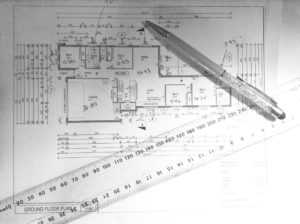NCC 2019 Energy Efficiency requirements have become mandatory from May 1st 2020. To assist with the transition, we’ve put together a list of some of the upsides of the new legislation, and some of the tighter requirements you’ll also find there.
Upsides of NCC 2019 Section J ‘Deemed to Satisfy’ assessments for building design
While generally requirements are more stringent under NCC 2019, there are at least a few ways the new legislation makes it easier for designs to comply using the Deemed to Satisfy (DTS) method:
- Walls and glazing of different orientations can be assessed as a whole – i.e. traded off against each other. So, for example, a better performing north-facing wall can partially offset a poorer performing east-facing wall. This makes DTS a much more flexible tool for achieving compliance.
- In a similar vein, DTS now only assess four orientations (N, E, S, W) instead of the previous 9 (N, NE, E, SE, S, SW, W, NW, Internal). This means there is more flexibility in designing an energy solution for a building.
- For most building classes/climate zones, the minimum R-Value for walls is now reduced. For example, for most building classes in climate zones 2 to 8, a wall now requires R 1.4 or less, down from R 3.3 for an external wall. Climate Zone 1 and Building Classes 3, 9c or 9a ward area buildings are the exceptions.
Tightened requirements in NCC 2019 Section J DTS
- All assessments must now incorporate an allowance for thermal bridging – the ‘leakage’ of heat through an insulated wall/roof via the frame. This will have a big impact for steel frame walls and roofs, for example – some steel frame fibro/plasterboard walls in some climate zones/building classes will not pass, irrespective of how much bulk insulation is in the frame, due to thermal bridging.
- Assessments will now consider the window:wall area ratio, for each wall type, on each orientation. The integrated wall-glazing construction will be assessed as a whole (with integrated minimum wall-component R values as above + glazing values). While this introduces significant complexity (for your energy assessor!) in the assessment, it also gives you as the designer more options in adjusting wall and glazing components to achieve compliance in the design.
- All roof colours must have solar absorptance of 0.45 or less, except in Climate Zone 8 – in the Colorbond range this includes Surfmist, Classic Cream, Paperbark, Evening Haze and Shale Grey.
- Concrete slabs on ground with a floor area of ~600 m2 or less will require underfloor insulation, up to a maximum of ~R1.5.
Your assessor may need more detail about some aspects of the design in order to provide an assessment. This might include wall frame construction details in order to assess thermal bridging – e.g. frame material and specifications, including stud/noggin spacing.
A good assessor will be across the details of the legislation so that they can collaborate with you and present flexible options to achieve compliance whilst containing build costs and design impacts!

